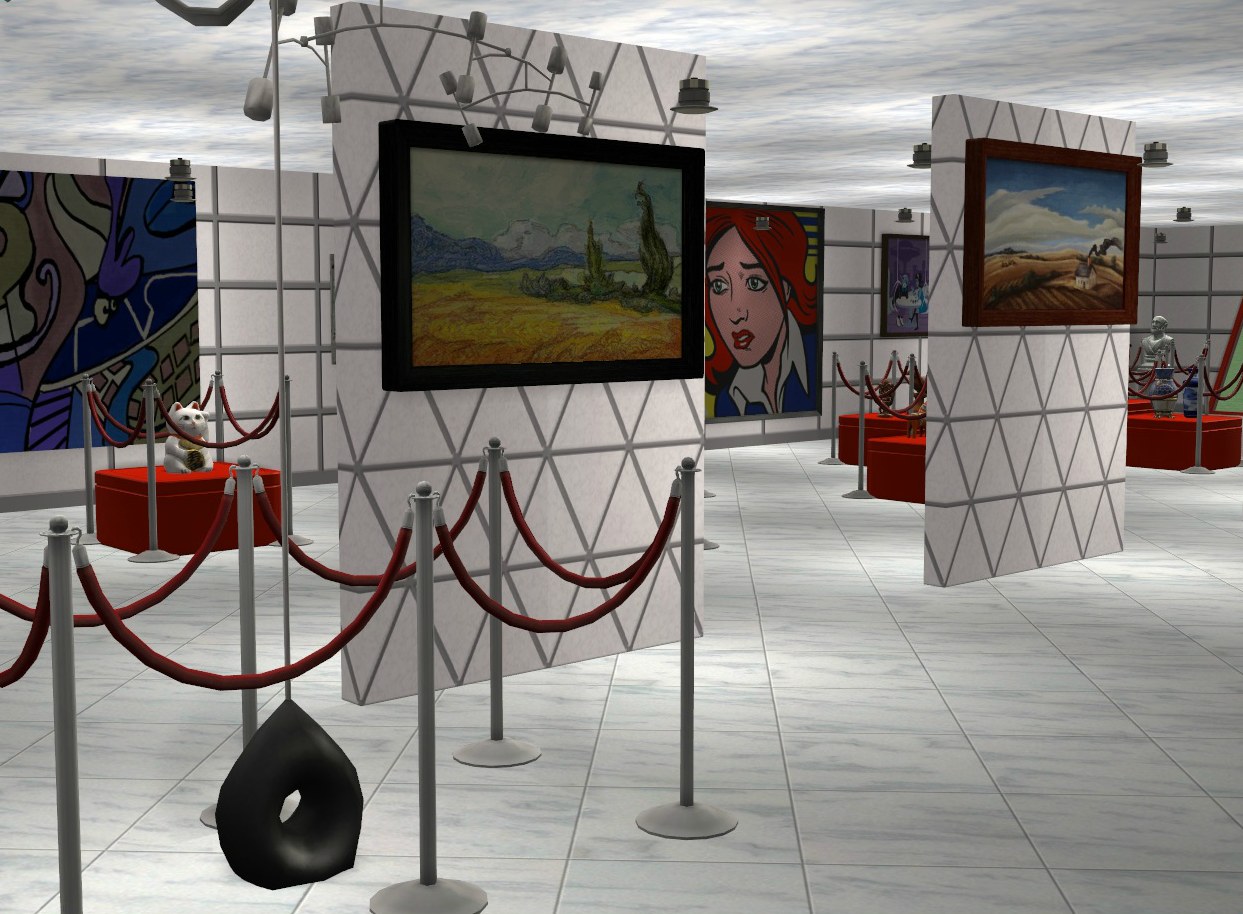TECHNOLOGY TUESDAYS
BY: ORVIS STARKWEATHER
 |
| Images collaged by Orvis Starkweather. Original images from http://www.freeimages.com/photographer/melodi2-44775 and http://www.freeimages.com/photographer/mattc3004-43116. |
With
54% of Canadians having played a videogame in the last 4 weeks, it is unquestionable that the medium is pervasive. Most young people that visit museums arrive with a set of assumptions about collections that have been influenced by videogames. “As a cultural medium, games carry embedded beliefs within their systems of representation and their structures, whether game designers intend these ideologies or not” (Flanagan, 223). As informed professionals, thinking critically about the relationship between museums and videogames is important to better understand our communities. To get the ball rolling, I offer three entry points on the relationship between in-game collecting and museums as a way to provoke further thought.
 |
| User modified art gallery from SIMS 2. Source. |
FUNCTION
In videogames, playable characters are often given collection items as rewards. While some of these collections are meant only to be viewed like the trading cards in the
Harry Potter game series, others items provide an added benefit to the avatar, such as improved stats from a weapon. In these games, objects are used as tools in addition to their secondary role as objects prized for their visual splendor. Objects can be kept throughout the game, or they can be discarded or sold as the player, receives superior ones. Other objects one collects can be consumed or used up during the course of play. Museums, on the other hand often try and preserve their objects, with a desire for conserving them for future generations.
SENSORY EXPERIENCES
In videogames, players are able to manipulate objects in ways that glass cases prevent. In
The Elder Scrolls V: Skyrim, for example, the avatars can pick up objects and listen to the sounds they make as they interact with other items. Museums, on the other hand, have the potential to provide even deeper access to objects by providing an experience the console has yet to reproduce: touch.
 |
| Collected Pokemon from Pokemon X or Y. Source. |
AUTHENTICITY
While authenticity is a value that museum collections are expected to achieve, the same standard isn’t assumed of most collected items in video games. While
Assassin’s Creed Unity is established as a blockbuster videogame with historical content, the buildings and other period specific objects are modified to make a more enjoyable playing experience and meet budgeting needs. Other games, such as
The Vanishing of Ethan Carter use Photogrammetry to capture objects from the real world to create 3-D models. These models, however, are often combined like a collage, making information about the original location and provenance difficult to track down. For these reasons, most people would assert the museum provides a more authentic experience. Yet, I would propose there are at least two exceptions where authenticity in videogames is on par with or surpasses that of museums: art games and experiences. When a videogame is intended to be read as an artwork it maintains the intention and vision of its creator, like Jason Rohrer’s
Passage.
 |
| Screenshot from Never Alone. Source. |
The immersive environments of videogames also free up possibilities for generating experiences that would be unattainable in a museum. The game
Never Alone, for example, was envisioned by Alaska Native storytellers as a way to bestow their values and lore. This allows the game creators to tell their story on their own terms and create an experiential learning opportunity that is more accurate than what is found in a museum.
WANT MORE INFORMATION?






No comments:
Post a Comment
Note: only a member of this blog may post a comment.